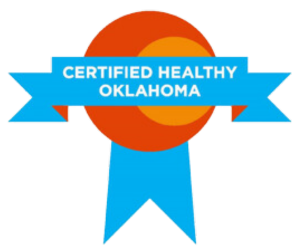Water-based physical activity, such as swimming, improves physical and mental health throughout life; however, it can put people at risk for recreational water-associated illness and injury. Code enforcement through inspections of public aquatic facilities is an important tool in keeping Tulsa County residents healthy.
Anyone operating a commercial pool in Tulsa or Broken Arrow must be certified through courses offered by the Tulsa Health Department. Those operating pools outside these city limits are strongly encouraged to attend.
Certification Options
Five-year certifications can be received through three avenues:
Registration for THD Course
Registration is required for this course. Please call 918-595-4200 or email EHSD@tulsa-health.org to register. The fee is $40.00 per person and must be paid in advance. No personal checks will be accepted. Seating is limited to the first 50 to register.
2024 THD Training Course Dates
All classes are held at the James O. Goodwin Health Center, 5051 S. 129th E. Ave, Tulsa, OK 74134, in the Auditorium from 8:30 a.m. – 1:00 p.m. View Flyer
THD Course Content
For more information, please call 918-595-4200, or click to view the following helpful manuals:
By December 19, 2008, ALL public pools and spas that operate year-round, and before opening in 2009, ALL public pools and spas that operate seasonally, must:
Effective November 1, 2010, the Oklahoma state statute changed excluding splash pads from licensure. Therefore, THD will no longer inspect or license splash pads. Swallowing water in interactive fountains, splash pads, and spray parks might make you sick. View an infographic for tips on staying safe at splash pads and interactive water fountains.
Effective January of 2013, certain public pools and spas will be required to provide handicap access. For further information, or to see if you are required to provide this access, go to www.access-board.gov
What is pH?
pH is a value that identifies how acidic or basic a solution is. pH is important for vessel and equipment protection, swimmer comfort and sanitizer effectiveness. The acceptable pH range is 7.2 to 7.8. Soda ash is used to raise pH; acid is used to lower it. Always test and adjust total alkalinity before testing and adjusting pH.
What is total alkalinity?
Total alkalinity is a measure of resistance to change of pH (buffering or acid neutralizing capacity of the water). The correct total alkalinity helps maintain pH. The acceptable range is 80ppm to 200ppm. Sodium bicarbonate is used to raise the total alkalinity; acid is used to lower it.
What is calcium hardness?
The measure of how much calcium and magnesium that is dissolved in water is calcium hardness. The acceptable range is 50ppm to 500ppm. Calcium chloride is used to raise the calcium hardness and fresh water is used to lower the calcium hardness.
What is water balance?
Water that causes no damage is balanced. Water that corrodes (eats away) or water that causes scale (build up) is unbalanced.
How do I check my water?
A test kit can be obtained from professional pool establishments in the Tulsa area. They will also test your water if you bring in a sample. A DPD test kit is required for commercial pools.
What type of chlorine should I use?
There are two types of chlorine: Unstabilized chlorines such as calcium hypochlorite, sodium hypochlorite, lithium hypochlorite, and chlorine gas have no cyanuric acid. Stabilized chlorines such as Sodium dichlor and trichlor have cyanuric acid. Cyanuric acid acts as a sunscreen to keep the chlorine from burning off as fast. Commercial pools are required to use chlorine. Consult your pool professional to help you decide what type of chlorine is right for you.
What do I do if my pool is green?
When a pool is green it needs to be shocked to eliminate algae. Shocking the pool entails adding calcium hypochlorite to reach break point chlorination. Consult your pool professional when you have an algae problem. There are different types of algae (mustard, black, green). They each require different types of treatment.
If I go to a pool, how do I know the water is safe?
It's hard to know. If the water is clear and doesn't smell foul, then it is generally safe. If the main drain in the bottom of the pool isn't clearly visible, do not get in. Ask to see the daily test records if you are at a commercial facility and have some doubts. Always use your best judgment. If you are at a public pool, and are concerned, you can call the THD at (918) 595-4200.
What other safety issues should I look for?
Always check to make sure the main drain is secure, especially in hot tubs and wading pools. Look for easily accessible life-saving equipment and an organized, clean environment. Always use your best judgment.
What should take place if a fecal accident occurs in the pool?
If it is a contained formed stool and there is an acceptable chlorine level of 1 to 5 ppm:
If it is a watery fecal stool or vomit:
We have 10 locations across Tulsa County that offer a variety of services to help you and your family stay healthy.







